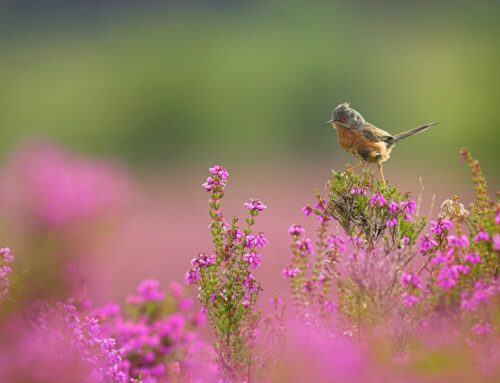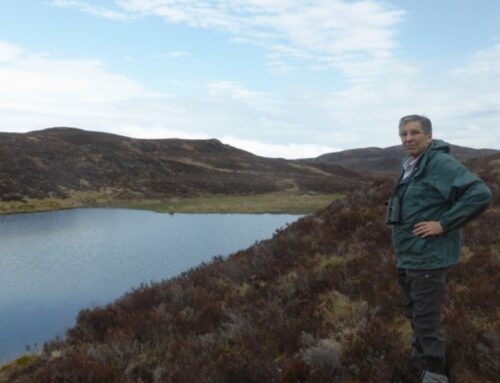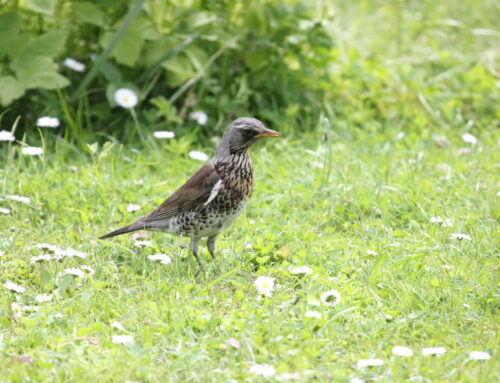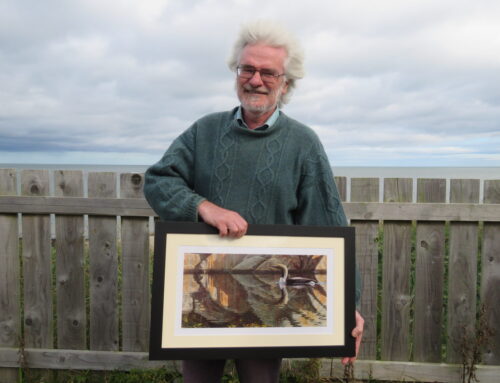What to look for: March
The second installment in our monthly series of blogs giving seasonal tips on finding and recording rare breeding birds.
So, February has rolled into March and, despite the considerable dump of snow over much of the UK in recent days, spring is advancing – frogs are spawning, daffodils blooming, and the first reports of returning Sand Martins are coming in. But having started this series of blogs in February with lots of enthusiasm to encourage you to get out there and record rare breeders, I have to confess that I don’t have a huge amount more to say for March.
In terms of looking for and recording rare breeding birds, most of the target birds for March are the same as last month – the resident early breeders. It might seem like a bit of a cop-out, but please see the blog for last month!

Lesser Spotted Woodpecker, Rick Ingham
As in February, Goshawks Accipiter gentilis will be displaying over breeding sites in woodland on fine mornings, reaching a peak in their activity in March before becoming remarkably hard to find once they are nesting. Lesser Spotted Woodpeckers Dendrocopos minor are another species that are far easier to find at the moment than later in the season, as males will be drumming (a quieter, faster and longer sound that of Great Spotted) and calling in woodland and with luck, and persistence, will be easier to spot before the leaves come out.
Woodlarks Lullala arborea will be song-flighting with, in my opinion, one of the finest songs to be heard in the UK – early morning on calm days being a good time to listen out. And March is primetime to listen out for the soft hoot of male Long-eared Owls Asio otus, and perhaps the wheezier call of females. Timing can be important for this species – they can be silent through the middle of the night; getting to suitable habitat for the period around dusk gives a much greater chance of success. While Long-eared Owls can be easier to find later in the spring and summer when they have noisy young, that’s only good for finding successful pairs – early season searching won’t be influenced by such bias.

Long-eared Owl, Mark Eaton
Another resident species to add to the mix in March is the Dartford Warbler Sylvia undata. Although there is some dispersal during the winter, finding a Dartford Warbler on a suitable heathland breeding site at any time of year is an indication that it is worth checking during the breeding season, and by March males are already singing and setting up territories. The scratchy, jumbled song can carry some distance across heathland, although the birds themselves can be hard to see in thick gorse thickets. While populations on southern heathlands are well known, not all areas are well-monitored annually so extra reporting is welcome – and considerable numbers may escape detection in coastal heathlands spread along the coasts of southwest England and south Wales. Hampshire Ornithological Society are running a survey of their nationally important Dartford Warbler population this year – see http://hosdw.birdsurvey.org.uk for details.
Further north, March can see the first breeding activity of Crested Tit Lophophanes cristatus. This species was readmitted to the RBBP’s species list in 2020, and currently reporting is very low, so we’re keen to get more records. Although they don’t have a very obvious song, pairs will start of defend territories in the early spring and hence the diagnostic trilling call may be heard more frequently. They begin to excavate nests towards the end of March, and although females might excavate in a few different places before settling on a final nest site, it is a sure sign of a pair on territory and worth following up on. Rather harder to find in the Caledonian pinewoods of Strathspey and Deesside are a few pairs of Parrot Crossbill Loxia pytyopsittacus, and we receive very few breeding records. Those hoping to find Parrot Crossbills are best looking in old Scots Pine forests but need to be aware that, due to the complexities of crossbill identification, the Scottish Birds Records Committee will only consider records if accompanied by appropriate audio recordings – read more at https://www.the-soc.org.uk/content/bird-recording/sbrc/identification-of-scottish-and-parrot-crossbills.
Although March is rather early for Capercaillie Tetrao urogallus lekking, as we progress through the spring birders looking for Crested Tit, Parrot Crossbills and other Scottish pinewood specialities have the chance of coming across Capercaillie leks. Given the parlous state of the Capercaillie population, down to an estimated 542 individuals in the 2021/22 winter, it is extremely important that disturbance is avoided – recreational disturbance, particularly during the breeding season, has been identified as one of the greatest threats to this species. Whilst we can appreciate the attraction of watching a Capercaillie lek, we would urge all birders to stay away from leks and stick to paths in areas where they may be present to help safeguard the species. You can read more about current efforts to save the Capercaillie at the Cairngorms Capercaillie Project website.

Garganey, Mark Eaton
There are three rare breeders amongst the first migrants to return from African wintering grounds – Garganey Anas querquedula, Little Ringed Plover Charadrius dubius, Stone-curlew Burhinus oedicnemus and Osprey Pandion haliaetus. However, caution must be employed regarding records made early in the season, particularly for the first two species, as migrant birds may occur at many sites where they will not subsequently breed. However, the key thing is not simply to disregard such records, but to make a mental note to return to check later in the spring to see if individuals are still present. Little Ringed Plover is an under-recorded species; while a proportion of the population use wetland sites well-visited by birders, a significant proportion of the breeding population are on industrial and brownfield sites, active quarries and river shingles and thus may remain undiscovered – we will return to this species later in the spring. Stone-curlews are different, as other than the occasional grounded migrant bird tend to return directly to breeding sites, so early season records – perhaps located by the eerie, far-carrying call in the small hours – are a good indication of a potential breeding location.
The Common Crane Grus grus is an early breeder, and pairs can be on eggs as early as March. While the breeding distribution of the small UK population has been well-monitored since re-establishment in 1981, the steady increase in numbers and range expansion means that new sites are being occupied on frequent basis. Whilst this is a large and sometimes noisy species, their liking for large areas of wetland and bogland habitat means that pairs may escape detection, particularly when there are drainage ditches and other wet features in which to lurk. As with all rare breeding birds, you must be careful not to disturb breeding Cranes = this species can be very vulnerable to disturbance when establishing territories in the early spring, as well as when incubating.

Common Crane with chick, Ian Francis
There are a number of other species that will start to settle on territory in March – for example Short-eared Owls Asio flammeus and Hen Harriers Circus cyaneus may already be displaying over moorland and Marsh Harriers Circus aeruginosus over lowland reedbeds and farmland – but in many cases it may be too early to know whether these birds are intending to breed, or are more likely to move on. Note that the RSPB are organising a UK survey of Hen Harriers in 2022, with a fieldwork team working alongside raptor study group volunteers. You can help the survey by reporting Hen Harriers in breeding habitat to their Hen Harrier hotline on 0845 4600121. Further details will be available on an RBBP blog shortly.
If you are lucky enough to find individuals or pairs of a rare breeding bird species (our full list is here) in March, you should aim to return in April, or later, to see if the bird(s) are serious in their intent to breed. And of course, we would encourage continued monitoring throughout the breeding season – with all records of rare breeding birds, it’s very valuable if a possible breeding record (a singing male Dartford Warbler, for example) can be turned into a probable record (maybe by finding that the Dartford Warbler is accompanied by a female) and then hopefully to a confirmed one (perhaps by observing the adults carrying food to a nest, or seeing newly fledged juveniles) later in the season.
So, having started by saying there’s not a lot new to look for in March, I’ve actually come up with quite a list of exciting species that are beginning their breeding seasons now. So get out there and see what you can find, and remember to submit records!






